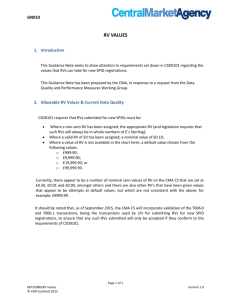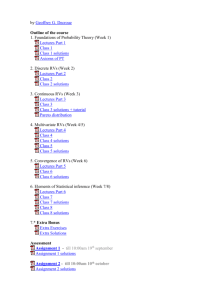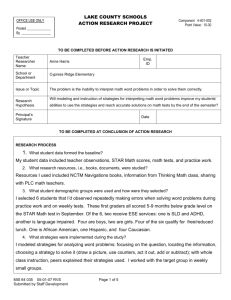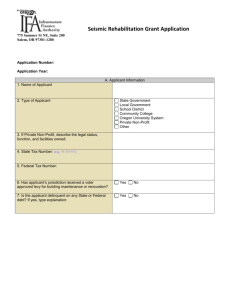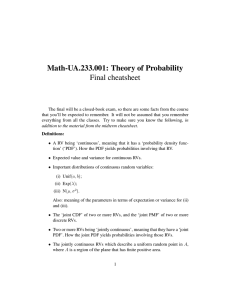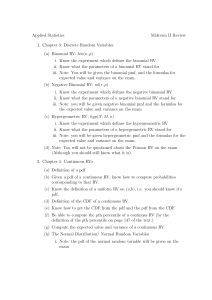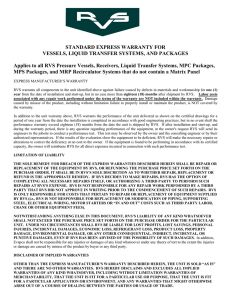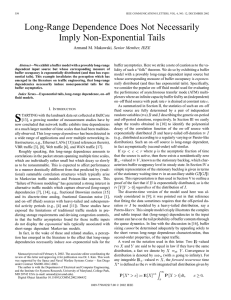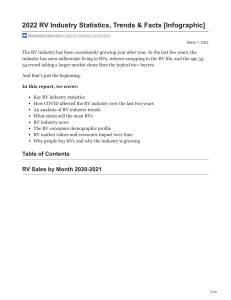Applied Statistics Final Exam Review: Material Presented Past The Midterms
advertisement
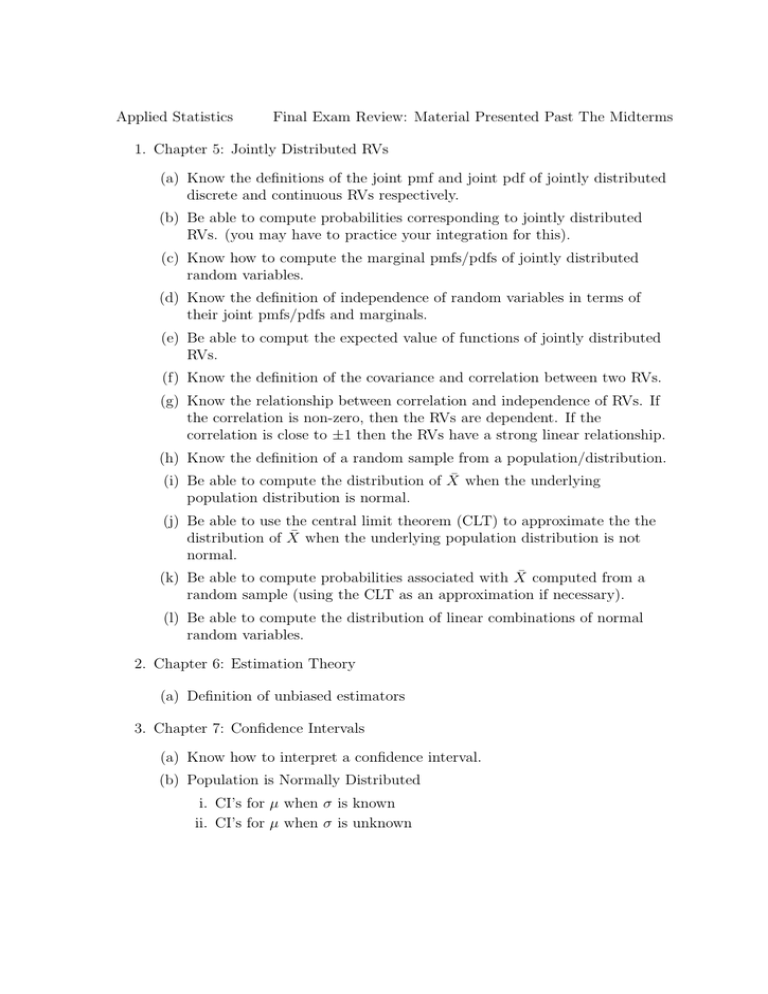
Applied Statistics Final Exam Review: Material Presented Past The Midterms 1. Chapter 5: Jointly Distributed RVs (a) Know the definitions of the joint pmf and joint pdf of jointly distributed discrete and continuous RVs respectively. (b) Be able to compute probabilities corresponding to jointly distributed RVs. (you may have to practice your integration for this). (c) Know how to compute the marginal pmfs/pdfs of jointly distributed random variables. (d) Know the definition of independence of random variables in terms of their joint pmfs/pdfs and marginals. (e) Be able to comput the expected value of functions of jointly distributed RVs. (f) Know the definition of the covariance and correlation between two RVs. (g) Know the relationship between correlation and independence of RVs. If the correlation is non-zero, then the RVs are dependent. If the correlation is close to ±1 then the RVs have a strong linear relationship. (h) Know the definition of a random sample from a population/distribution. (i) Be able to compute the distribution of X̄ when the underlying population distribution is normal. (j) Be able to use the central limit theorem (CLT) to approximate the the distribution of X̄ when the underlying population distribution is not normal. (k) Be able to compute probabilities associated with X̄ computed from a random sample (using the CLT as an approximation if necessary). (l) Be able to compute the distribution of linear combinations of normal random variables. 2. Chapter 6: Estimation Theory (a) Definition of unbiased estimators 3. Chapter 7: Confidence Intervals (a) Know how to interpret a confidence interval. (b) Population is Normally Distributed i. CI’s for µ when σ is known ii. CI’s for µ when σ is unknown iii. CI’s for σ using the sample standard deviation and the χ2 critical values. (c) Population is not normally distributed i. CI’s for µ using large sample approximations (d) CI’s for the population proportion. 4. Chapter 8: Hypothesis Tests (a) Definition of significance level (b) Definition of rejection region for a test statistic (c) Definition of type 1 and type 2 error. (d) Understand the relationship between the type 1 error and the significance level. (e) Definition of one sided and two sided alternatives (f) Definition of a simple null hypothesis (g) Tests when the population is normally distributed. i. Tests for µ when σ is known using the one sample z statistic. ii. Tests for µ when σ is unknown using the one sample t statistic. (h) Tests when the population is not assumed to be normal. i. Using large sample approximations, i.e. the CLT, to perform a hypothesis test for µ, the mean of a population.
